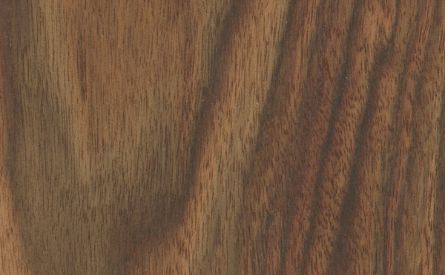CHECHEN
Caribbean Rosewood / Metopium brownei

Local Names
Honduras Walnut, Black Poisonwood, Palo de Rosa, Boxcheché
Distribution & Tree
Chechen is commercially referred to as Caribbean rosewood, Honduras walnut and, in Mexico, palo de rosa (literally “rosewood,” although not part of the Dalbergia genus). It’s found in Guatemala, Belize, and southeastern Mexico as well as many parts of the Caribbean, including the Dominican Republic, Haiti, Cuba, and Jamaica. Trees reach 25 meters in height and up to 60 cm in diameter. Chechen grows well in areas of forest disturbance, thriving in well-drained soils but also growing well in lowlands with periodic flooding.
Wood Appearance
Varying from red and brown colors to black green to a brownish-golden hue, often streaked with brownish patterns. Many pieces are figured with swirled patterns when quartersawn. The grain is often straight, but sometimes interlocked. Texture is uniform medium to fine with a good luster.
Processing Properties
Fairly easy to work, but machining pieces with interlocked grain may present tearing. Tungsten-carbide and Stellite tipped implements are recommended. Planing and sanding are easy and yield good results. Glues and finishes well. Nails and screws should be pre-bored. While the sap of this tree causes severe skin reactions, similar to poison ivy, the wood does not typically cause any reaction although care should be taken with wood dust.
Strength & Durability
A very hard species, chechen is resistant to termites and moderately resistant to decay. It has good dimensional stability.
Wood Uses
Veneer, fine furniture, cabinetry, flooring, mouldings, turned objects, decorative veneer, and small specialty wood items.
Ecological & Social Importance
In Haiti, the leaves, flowers, bark and roots are used to treat kidney, bladder and a variety of other infections.
| Reference Species | ||||
| Technical Characteristics | Chechen | Meranti | Gonçalo Alves | |
| Density | kg/m3 | 990 | 850 | 961 |
| Janka Hardness | kgf | 1,021 | 726 | 1,026 |
| Bending Stiffness (Modulus of Elasticity) | GPa | 9.8 | 17.0 | 16.6 |
| Bending Strength (Modulus of Rupture) | MPa | 120.6 | 122.3 | 117.0 |
| Crushing Strength | MPa | 57.0 | 70.9 | 74.2 |
| Shrinkage, Radial | % | 4.1% | 5.5% | 4.2% |
| Shrinkage, Tangential | % | 6.7% | 10.1% | 7.8% |
| Shrinkage, Volumetric | % | 10.8% | 15.7% | 11.2% |
| T/R Ratio | 1.6 | 1.8 | 1.9 | |
| Values determined at 12% humidity - Provided for reference only | ||||
|---|---|---|---|---|
DENSITY
JANKA HARDNESS
BENDING STIFFNESS
BENDING STRENGTH
CRUSHING STRENGTH
SHRINKAGE
Values are for reference only and cannot be guaranteed. Wood is a natural material and physical and mechanical properties may vary depending on age, genetics, and other factors. We encourage customers to consult the references provided in the bibliography. For further explanations of wood’s key technical characteristics, an excellent resource is the Wood Database with articles on Density (average dried weight); Janka hardness; Elastic Modulus; Rupture Modulus; Crushing Strength; Radial, Tangential and Volumetric Shrinkage.






